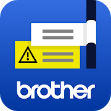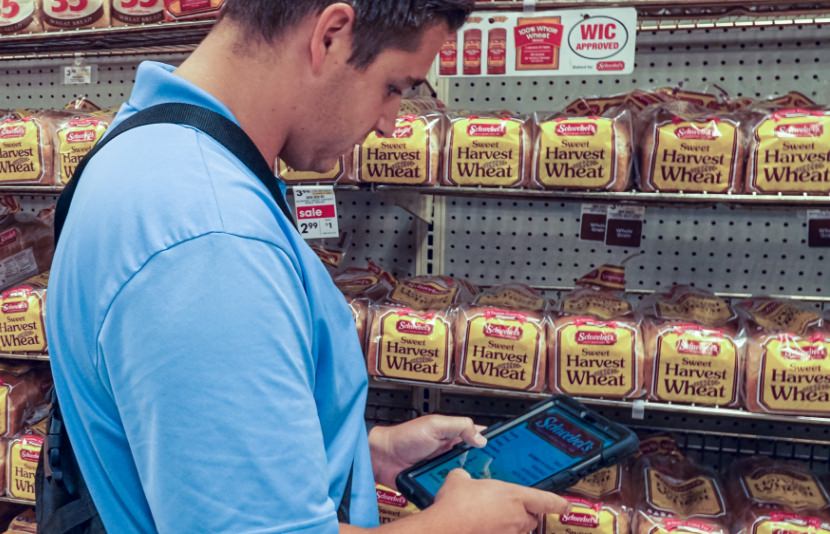Get 2-inch printing fit to your work with endurance to handle everyday hazards.
Thermal printers
Simplify your printing process with high-speed and user-friendly direct thermal or thermal transfer printers designed for efficiency and quality.
Industrial |
Desktop |
Mobile |
Laminate |
|
|---|---|---|---|---|
| Uses | For high-volume, high-speed printing | For low- to mid-volume printing at low- to mid-speed | For on-the-spot lightweight printing, or mounted on-vehicle or cart | For small format jobs that require durable labels |
| Technology | Direct Thermal & Thermal Transfer | Direct Thermal & Thermal Transfer | Direct Thermal | Thermal Transfer |
| Print Width | 2in to 4in | 1in to 4in | 1in to 8.5in |
0.14in to 0.94in |
| Resolution | Up to 600dpi | Up to 300dpi | Up to 300dpi | Up to 180dpi |
| Print Speed | Up to 14ips | Up to 8ips | Up to 6ips | Up to 1.2ips |
| See industrial printers | See desktop printers | See mobile printers | See laminate printers |
Filter printers

PocketJet 883L
High-resolution full-page mobile printer with USB-C®, Wi-Fi®, AirPrint®, Bluetooth®, and battery

RuggedJet 3250WBL
3-inch rugged mobile receipt and label printer with Wi-Fi®, Bluetooth® wireless technology, and Li-ion battery

P-touch EDGE 560BTVP
Handheld industrial label printer with Bluetooth® and dual auto-cutter (up to 24mm labels)
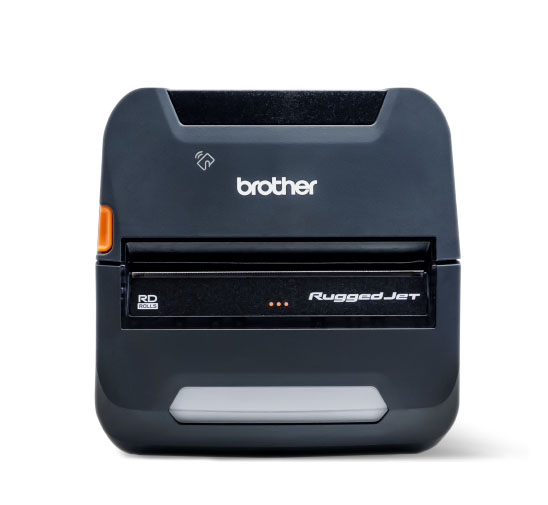
RuggedJet 4230BL
4-inch rugged mobile printer with Bluetooth® wireless connectivity and smart Li-ion battery
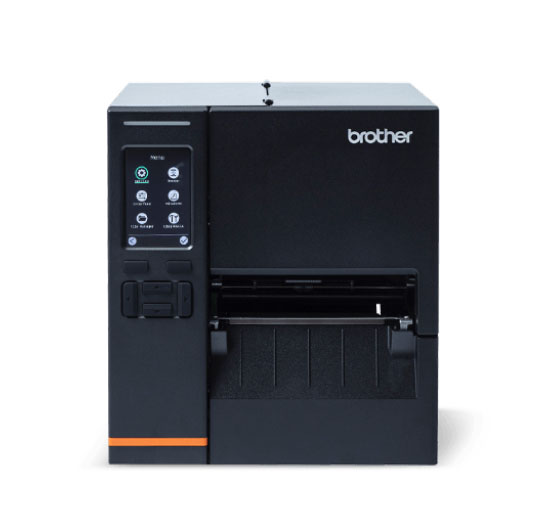
Brother Titan Industrial Printer 4121TN
High resolution, high-volume barcode label printer with touch panel

RuggedJet 2150
2-inch rugged mobile receipt and label printer with Wi-Fi® and Bluetooth® wireless technology
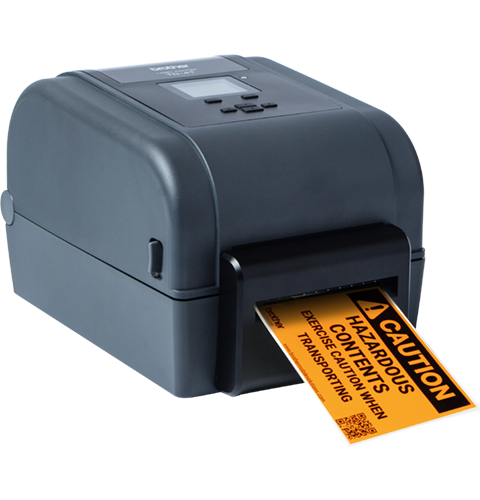
TD 4750TNWBCS
High-resolution facility and safety label printer with Wi-Fi® and Bluetooth® wireless technology
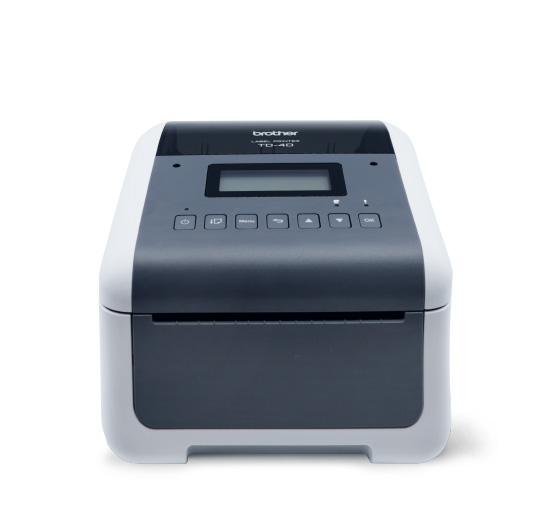
TD 4550DNWB
High-resolution 4-inch direct thermal desktop printer with Wi-Fi®, MFi and Bluetooth® wireless technology
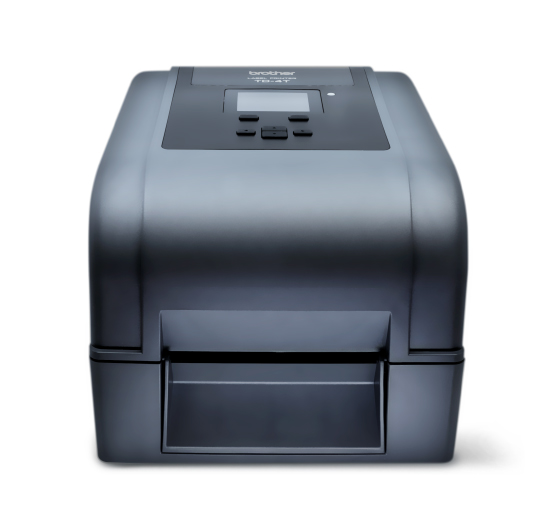
TD 4750TNWB
High-resolution 4-inch thermal transfer desktop printer with Wi-Fi®, MFi and Bluetooth® wireless technology
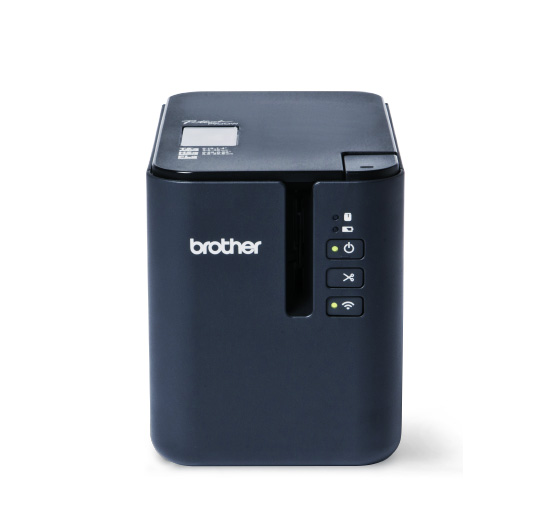
P-touch 950NW
High-resolution industrial desktop label printer with Wi-Fi® and network capability

RuggedJet 4250WBL
4-inch rugged mobile printer with Wi-Fi® and Bluetooth® wireless technology and smart Li-ion battery

RuggedJet 3230BLCP
3-Inch rugged mobile receipt & label printer with Bluetooth®, Li-ion battery & charging conductor plate
Thermal printing is a digital printing method that generates text or images by selectively applying heat to heat-sensitive paper or ribbons. The thermal printer sends electric currents to heating elements within a thermal printhead. After the heat is applied via the printhead, the text or image is produced or transferred onto media like paper, labels, or tags.
Direct thermal printing
- Direct thermal printing is a process that creates printed text or images by applying selective heat to thermal paper as it moves across the thermal printhead. The printhead is heated in the areas that correspond to the pixels or image of what is to be printed. In response to the heated area, the coating of the heat-sensitive paper reacts and changes color, resulting in the creation of the desired text or image.
Thermal transfer printing
- Thermal transfer printing is a method where heat is used to transfer wax or resin from a ribbon onto paper, tags, or labels. Selective heating from the thermal printhead is used to only heat certain areas of the ribbon installed into the printer, causing the wax or resin to melt and transfer onto the paper or label.
Watch our video on direct thermal vs. thermal transfer printers.
Thermal printers do not use traditional printer ink. During direct thermal printing, heat is applied to thermo-reactive paper, allowing the paper to change its color where the heat is applied. Thermal transfer printers use ribbons made of wax or resin, not ink, to transfer the desired design onto paper or labels where pressure is applied.
Thermal printers are used in many industries and environments due to their versatility, speed, and efficiency. Some key industries include:
- Retail, for price labeling, markdowns, fresh food labels, curbside pickup, and receipts.
- Manufacturing and warehousing, for shipping labels, forklift printing, shelf rack labels, pallet labels, safety labels, and various barcode labels.
- Healthcare, for medication labels, specimen labels, patient identification labels, and wristbands.
- Electrical, Datacom & Security A/V, for cable labeling, panel labeling, and wire identification.
- Law enforcement, for mobile-printed documents such as eCitations, warrants, parking violations, accident reports, and other notices.
- Food and Beverage / Hospitality, for point-of-sale receipts, order tickets, nutrition labels, and expiry date labels.
- Transportation & logistics, for shipping labels, tracking labels, inventory tags, and bills of lading.
Thermal printhead
The thermal printhead is the most crucial component of any thermal printer. It contains an array of tiny heating elements arranged in a linear pattern. These elements are typically made of a material with high electrical resistance, allowing them to generate heat when an electric current passes through. A higher density of heating elements on the printhead results in increased print resolution, providing a sharper and more detailed output.
- In direct thermal printing, the heating elements found within the printhead are selectively activated by a controller board in the thermal printer to create the desired text or image onto thermal paper.
- In thermal transfer printing, the printhead selectively applies heat to specific areas of wax or resin ribbons, allowing the text or image to be transferred directly to your chosen media.
Here is an example of a printhead used in our Brother Titan Industrial Printer:
Platen roller
The platen is a cylindrical roller that feeds and maintains pressure on the printing material (usually paper or labels) causing it to move through the thermal printer. Below is an examples of a platen utilized in our Brother TD 4 desktop thermal printers:
Motherboard
Like the motherboard in a PC or mobile phone, the motherboard contains firmware to manage the overall operation of the thermal printer, interpreting the data received and coordinating the actions of the printhead and other components.
Sensors
Sensors are utilized within thermal printers to detect the position of the paper, labels, or tags, ensuring accurate and precise printing.
Spring
Utilizing a spring, targeted pressure is applied to the thermal printhead, ensuring continuous contact with the material you are printing on. This helps ensure consistent and effective printing.
Motor
A motor is responsible for driving the movement of the thermal paper or labels through the thermal printer, providing just the right amount of speed to produce an optimal print.
Optional enhancements
When time, consistency, and precision are key to your operation, thermal printers are often paired with accessories like label rewinders, label peelers, label cutters, paper guides, and more. Brother offers a wide range of thermal printer accessories that are built to optimize your workflow.
Printer housing
The housing encases and protects the internal components of the thermal printer, providing a durable and secure structure. Some thermal printer housings are designed to provide protection in harsh environments, withstand accidental drops, or prevent moisture or dust from entering the printer.
The longevity of thermal printing depends on many factors, including the method of thermal printing, the quality of the materials or media used, and the environment in which the thermal print output will be used.
Direct thermal prints typically have a shorter lifespan compared to thermal transfer Because of its use of heat-sensitive paper or labels, the prints are susceptible to fading over time, especially when exposed to heat, light, or environmental factors. Direct thermal printing is generally suitable for short to medium-term applications, such as shipping labels, POS receipts, and police citations. Depending on storage conditions and how the printed item is used, the lifespan of direct thermal prints can vary from several months to a few years.
Thermal transfer prints tend to be more durable and long-lasting compared to direct thermal prints. Because wax or resin is used to produce the printed image or text, thermal transfer prints can traditionally withstand harsher environments and use cases. Suitable for applications like hazard & safety labeling, retail barcode labels, or warehouse storage labels, thermal transfer printing can last for several years under appropriate conditions.
No, regular printer paper cannot be used in a thermal printer. Thermal printers require special thermal paper that is coated with a heat-sensitive layer. The printhead of a thermal printer applies heat to the thermal paper, causing a chemical reaction in the coating that produces the image or text.
Regular printer paper is not coated with the necessary heat-sensitive material, and using it in a thermal printer will not result in any printing. Attempting to use regular paper in a thermal printer may also damage the printhead or other components due to the lack of the required heat-sensitive coating.
It’s important to use the appropriate type of thermal paper specified for your thermal printer to ensure proper functionality and print quality. Brother offers high-quality, field and lab-tested thermal paper, labels, tapes, tags, and ribbons to ensure the best output for your thermal printer.
The most expensive part of a thermal printer is usually the printhead, particularly in printers with advanced features or high-resolution printing capabilities. The thermal printhead is a critical component responsible for applying heat to the thermal paper or ribbon, creating the desired images or text.
Thermal printheads are intricate devices with tiny heating elements, and their precision and durability are essential for high-quality printing. Printheads can be costly to manufacture due to the materials used and the complexity of their design. Additionally, printheads may require occasional replacement due to wear and tear over time, especially in high-volume printing environments.
Brother realizes printhead replacement can be costly and cause unnecessary downtime. To help keep your operation moving, we offer unlimited printhead replacements for your Brother mobile and desktop printers while under warranty. And for our high-volume Industrial tabletop printers, get replacement printheads at up to 56% off the list price while the machine is under warranty. Learn more about our printhead perks.
Choosing between thermal printing and laser printing really depends on the specific uses and needs. Laser printing generally offers higher print quality, making it suitable for detailed documents while thermal printing is faster and more cost-effective for tasks like receipt and barcode printing. Thermal printing has lower upfront and maintenance costs and does not require toner, but prints may fade over time. Laser printing is ideal for high-resolution color prints.
Overall, the choice depends on factors such as print quality, speed, cost, durability, and application needs. With over a century of innovation under our belts, Brother offers a wide array of thermal or laser printers suited for your specific application.

 PRODUCT SEARCH
PRODUCT SEARCH

































